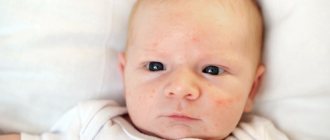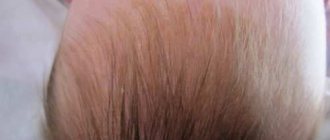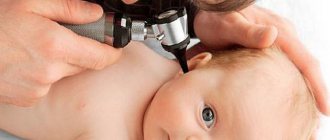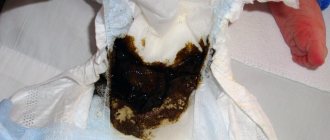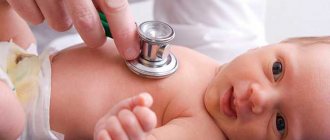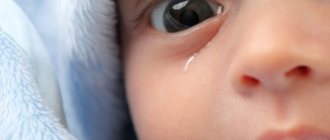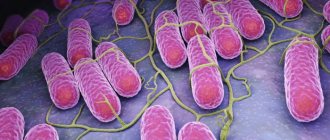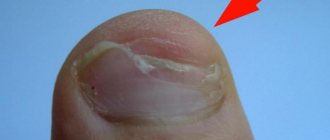What is a food allergy?
Pathogens that can lead to various reactions are called allergens. In food, proteins perform this role. During thermal or other processing, allergens may lose their properties completely or partially; some, on the contrary, become more active.
The allergic reaction mechanism is launched almost immediately after the pathogen enters the body. The production of immunoglobulin E begins, which triggers a series of reactions that result in allergy symptoms. Depending on the activity of the pathogen, as well as the degree of reaction to a particular allergen, the first reactions can occur either immediately after eating or be extended over a certain period of time.
Allergy symptoms in children
Allergy symptoms in children are most pronounced in spring and summer. Some allergic reactions appear immediately, while others, such as accumulative allergies, occur only after time, after the body accumulates and “breaks down” under the influence of the allergen.
Very often, cumulative allergies appear after prolonged contact with an allergen that enters the child’s body in small quantities. For example, with food and drug allergies, etc.
Signs of allergies in children appear not only on the skin, but also on the mucous membranes of external and internal organs.
Common symptoms of various allergic reactions:
- Skin manifestations of allergies are almost always present (regardless of its nature). Skin rashes that characterize themselves especially clearly include: atopic dermatitis, urticaria, and allergic dermatoses. Blisters and a small rash appear on the skin against a background of hyperemia, accompanied by severe itching and swelling. With contact dermatitis, a rash occurs where the allergen comes into contact with the skin after some time. With food allergies, a rash appears on any part of the child's body. Her favorite localization: chin, cheeks, palmar side of the wrists, knee and palm folds;
- Body temperature with allergies in children occurs when a bacterial infection is associated. First of all, this is due to the peculiarity of the structure of the child’s skin, which is characterized by looseness and a tendency to spread the pathological process from local to widespread form. It is due to a decrease in the protective properties of the skin, structural features and scratching that pyoderma occurs, which can be accompanied by an increase in temperature;
- Allergy cough in children occurs due to respiratory allergies. Allergic cough occurs with pharyngitis, laryngitis, bronchial asthma, alveolitis. He is distinguished by unobtrusiveness and consistency. A coughing attack occurs after contact with an allergen. With it, if there is no acute respiratory infection, there is no fever or sore throat when swallowing. Very often there is swelling of the vocal cords, which is accompanied by loss of voice. Bronchial asthma is more severe, in which bronchial spasm occurs and difficulty in exhaling with shortness of breath. During the process of resolving an asthma attack, the child develops a cough with sputum, which easily comes out in the form of transparent casts.
Symptoms depending on location on certain parts of the body:
- Allergies on the legs of a child occur locally due to contact dermatitis. In all other cases, with food allergies and hives, a rash forms not only on the legs, but also on other parts of the body. It manifests itself as severe itching with a small rash that covers the child’s skin without clear boundaries;
- An allergy to a child's buttocks almost always manifests itself in the form of contact dermatitis to a diaper or to the powder used to wash children's clothes. The elements of the rash are represented by erythema, vesicle, papule. The addition of infection is accompanied by pyoderma. It is worth distinguishing an allergic reaction from diaper rash, which occurs due to insufficient care of skin folds. Very often exudative diathesis manifests itself on the buttocks. The disease begins with small blisters, which merge into bright spots, turning into wet eczema;
- Allergies in a child’s hands occur when the skin is hypersensitive to chemicals contained in toys, soaps, and creams. Rarely, but still possible, an allergy to cold. As a rule, rashes appear on both hands after a few days. That is why parents cannot immediately determine what the reaction was to. Rash on the upper extremities due to contact dermatitis is much more common than on other parts of the body;
- Allergies on a child’s back often occur to fluff, wool, medications, food, etc. It looks like a nettle burn or in the form of small red, coalescent spots that itch very much;
- Allergy on the cheeks of a child manifests itself during diathesis as bright pink spots, usually due to errors in the nutrition of the mother, breastfeeding or the baby itself;
Features of the course of an allergic reaction in childhood:
- Before the age of three, pseudoallergy is more common. This is due to the immaturity of the immune system, intestinal dysbiosis, helminthic infestation, etc.;
- Allergies are prone to generalization of the process and spastic phenomena. Such children more often develop false croup (stenotic laryngitis), as well as bronchitis with an asthmatic component;
- The most important thing is that many allergic reactions are reversible. That is why it is important to contact an experienced specialist who, by prescribing competent treatment, can cure a small patient or reduce the likelihood of exacerbation and manifestation of the disease to a minimum.
Symptoms of food allergies
The body's response to pathogens is not the same and is divided between different types of organs and tissues, which makes it difficult to make an accurate diagnosis when the problem is not obvious. Answer the question “what does a food allergy look like in a baby?” A clear knowledge of existing symptoms, the mechanics of allergies and the diet itself will help.
On the skin side, the disease manifests itself in the following symptoms:
- rashes of any kind;
- redness;
- diathesis of the cheek area;
- the occurrence of diaper rash;
- profuse sweating;
- hives;
- peeling of the scalp;
- Quincke's edema.
Gastrointestinal symptoms:
- regurgitation;
- vomit;
- diarrhea;
- constipation,
- flatulence.
There are also combinations of various symptoms, among which the most dangerous are Quincke's edema and bronchospasm. Answer to the question: “How do severe food allergies manifest in infants?” - such. In both cases, suffocation develops with attacks of dry cough, the complexion changes, and if the baby does not respond in a timely manner, the baby may suffocate.
First aid for bronchospasm:
- Immediately call an ambulance and call for a squad, and ask what actions need to be taken before the ambulance arrives;
- Find out what dose of antihistamine medication available on hand should be given to your baby;
- Give the baby medication following the recommendations of the ambulance;
- Wait for the ambulance to arrive.
Types of allergies
Depending on the nature of the irritant, it is customary to divide allergies in children into the following types:
- Food allergies are one of the most common and most difficult to recognize. This difficulty lies in the fact that an allergen can be contained in almost every product or additive, for example, an allergy to sweets, spices, a mixture, etc. Most children have hypersensitivity to cow's milk, nuts, fish, chicken eggs, seafood, strawberries, etc.
- Allergy to dust . If we talk about the very reason for the development of an allergic reaction, then it develops not because of the dust itself, but because of the presence of dust mites and their waste products in it. In some situations, spores, plant pollen, particles of fluff, tree bark, etc. can act as irritants.
- Allergies to pets (cats, dogs) do not arise because of their fur, as is commonly believed, but due to the child’s contact with foreign proteins found on the skin, saliva and excretions of animals. Therefore, even a Sphynx cat will contribute to the development of hyperreactivity of the immune system.
- Hay fever is a common reaction of the human body to the products of flowering of various plants. Proteins from flowers and trees are perceived as foreign, therefore, after they penetrate into the nasal cavity (during breathing), allergic rhinitis develops: itching in the nose, sneezing, runny nose, difficulty breathing. This type of allergic reaction is seasonal, so it occurs once a year. One of the most common types is birch allergy.
- Allergies to medications and chemicals . In some cases, therapy or application of cream to the skin, or the use of decorative cosmetics is accompanied by skin itching and hyperemia, which disappears after stopping the drug or stopping the use of synthetic products.
- Insect bites (in particular, mosquito bites) can provoke the development of an allergic reaction, including angioedema and anaphylactic shock.
- Thermal allergies include cold allergies, manifested in the form of urticaria and rhinitis. And also an allergy to the sun.
Causes of the disease
As we have already said, the source of pathogens entering the child’s body is either the mother’s breast milk or artificial milk. In the case of breastfeeding, it is contained in those products that the nursing mother consumes, otherwise it is worth carefully studying the composition of artificial nutrition.
The risk of a child suffering from some form of allergy primarily depends on heredity. If one of the parents suffers from food allergies, then the risk of passing this problem on to the child is 37%; when both parents are allergic, then the chance of passing on the allergy from them is more than 60%. In addition to heredity, developed abnormalities, previous acute respiratory viral infections and intestinal diseases contribute to this.
Food allergies in children under one year of age occur primarily due to functional limitations of the digestive tract. Enzymes have low activity, protective antibodies of the mucous membranes are produced at a low rate. Coupled with the high permeability of the mucous membranes, this leads to the fact that pathogens easily enter the bloodstream.
Note. The development of allergies is greatly influenced by the period of pregnancy. Factors such as: smoking can contribute to the development of the problem; past illnesses; use of antibiotics; eating strong allergens such as chocolate, coffee, cow's milk, honey and others. It is also dangerous for the mother to be exposed to environmental allergens, especially in the summer.
Causes of allergies in children
There are many reasons that can provoke an allergic reaction in children, among which the most common are the following:
- Tendency to infectious diseases, their improper or insufficient treatment;
- Hereditary factor - often a tendency to allergies appears in children due to the inheritance of a similar reaction of the body from their parents, often through the mother;
- Aggressive ecology - various chemicals (aerosols, air fresheners, etc.), food additives, which are found in abundance in almost all products, which provokes increased allergenicity in children;
- Pathologies of internal organs also sometimes contribute to the development of allergies in children, usually these are disorders of the gastrointestinal tract, nervous or endocrine system, liver, etc.;
- Conditions of increased sterility of living conditions often lead to disruptions in the body, as a result of which the immune system weakens and children experience an allergic reaction;
- Allergies in children often manifest themselves on the skin due to poor nutrition. Our standard of living is declining, more and more children are transferred to artificial feeding almost immediately after birth - all this causes early sensitization or antigen sensitivity.
Diagnostics
If you observe the symptoms described earlier in your baby, you should consult a doctor for advice. In case of severe allergic reactions with the development of several signs or difficulty breathing, the child should be hospitalized immediately.
Diagnosis of the disease in medical institutions occurs as follows:
- information provided by parents is collected;
- a connection between the occurrence of certain symptoms and food intake is established;
- a general examination of the child takes place;
- a blood test is taken;
- An ultrasound examination is performed to exclude a possible non-allergic component of the problem.
The existence of the disease may be indicated by the fact that after stopping taking certain foods, allergic reactions stopped, as well as an improvement in the baby’s condition after taking medications.
After confirming the diagnosis, an equally important question arises - which product caused the reaction? This knowledge will help in the future to avoid a product or products that can not only harm the body, but also lead to death. To find out, a special analysis is carried out. Blood is taken from infants for testing. And in older children, a special test of skin reactions to a number of possible pathogens is carried out.
The procedure is carried out before the start of treatment, but the causes can also be identified indirectly. By studying the mother's food diary, you can identify new foods in the diet; if they strictly describe all types of food and liquid, then this greatly simplifies the diagnosis.
Treatment
The general treatment regimen for the problem consists of switching the mother’s diet to a new diet that excludes one or more foods that cause reactions or can cause them in the baby. In the case of artificial feeding, alternative formula options are selected. As an additional measure, your doctor may prescribe medications or various local medications.
Remember! It is prohibited to independently treat food allergies in a child! In trying to cure the disease, you can not only harm the child, but also cause irreversible consequences.
Artificial feeding
Most often, in this case, all sorts of reactions can occur due to cow's milk proteins. The problem is solved by replacing with alternative options, for example, hypoallergenic mixtures. The latter uses soy milk or complex milk processing, breaking it down into amino acids. In both cases, the chance of an allergy for children is zero.
Among the disadvantages of the approach, it can be noted that a child may develop intolerance to soy protein, and hydrolyzed mixtures are very expensive and have low taste characteristics. Therefore, when the symptoms decrease, the standard diet, including cow's milk and its various variations, is reintroduced. Hypoallergenic nutrition lasts up to 3 months, then the diet is expanded again, excluding the use of mixtures with strong allergens and a minimal amount of the original pathogen.
Breast-feeding
When breastfeeding, the mother is transferred to a new diet. To do this, for the next 7-14 days, exclude all possible dangers from the diet - canned foods and foods containing preservatives, animal fats, dyes, seafood, brightly colored fruits and berries, spices. The intake of milk, flour products and pasta is limited, also in limited quantities semolina and any milk-based cereals are consumed. Sugar and salt may be allowed in minimal quantities.
Fermented milk products are allowed, including hard cheeses and yoghurts without flavorings, dyes or flavorings. Among the cereals, it is recommended to eat buckwheat, rice, corn and oatmeal. Vegetables and fruits are selected according to their appearance; they must be green or white in color. Poultry, pork or beef is allowed boiled, steamed or dried.
You can get a more precise diet from your doctor. It will consist not only of the general recommendations described above, but will also take into account all the characteristics of the mother’s body, as well as the baby’s reaction to a particular pathogen. It is very important for the child to continue breastfeeding, so at the first signs of reactions, seek advice and adjust the diet.
Symptoms of an allergic reaction in children
It is quite simple to identify the presence of an allergy in an infant; it is much more difficult to determine its type, since in most cases the body’s reaction to a particular irritant is extremely similar. The most common symptoms include:
- Diathesis or atopic dermatitis . These manifestations are characterized by the presence of noticeable rashes or redness on the child's skin, the development of which can begin in infancy and often persists into adolescence or adulthood. This symptom can be combined with urticaria and allergic rhinitis.
- Allergic rhinitis is a long-term inflammation of the mucous membrane of the nasal cavity, which contributes to excessive production of mucous secretions (runny nose) and the development of difficulty breathing. As a rule, this symptom is seasonal and most often occurs when an allergy to pollen or household dust develops.
- Allergic cough - accompanied by swelling of the respiratory tract; attacks occur when the allergen is directly exposed. Occurs in bronchial asthma, tracheitis, hay fever.
- Urticaria most often occurs in patients with food or contact allergies. It is characterized by the presence of red spots on the skin that look like multiple insect bites or a nettle burn and appears on the entire surface of the child’s body: face, neck, arms, legs. Hives are often accompanied by severe itching, which can cause scratching on the baby's skin.
- Inflammation of the conjunctiva is manifested by swelling, itching in the upper and lower eyelids, excessive lacrimation, photophobia, etc.
- In some cases, allergies may be accompanied by an increase in body temperature , but this situation is only possible with the parallel development of an infectious disease.
If two or more signs occur, as well as a severe allergic reaction presented in the list, you need to urgently seek help from a specialist! The photo shows how allergies can manifest themselves.
Drug treatment
Various medications are used as an auxiliary treatment; they are very often used if they are faced with serious manifestations of allergic reactions. Prescribe antihistamine tablets or drops, absorbents, various gels and ointments for topical use. Some topical medications contain hormones, and in rare advanced cases, hormones are given intravenously. To restore the baby’s intestinal microflora, a medicine containing lactobacilli and bifidobacteria is prescribed.
How to prevent allergic reactions?
Alas, if your child is allergic to a particular product, then during breastfeeding the best treatment is to avoid the pathogen, as well as products related to it. There are also general tips on diet and feeding that will help prevent serious consequences after adding new products containing active allergens for the baby. Below, we have provided useful tips to help avoid or minimize allergic reactions.
- Complementary feeding should not be given to children under 6 months of age;
- The first complementary foods should be single-ingredient;
- Products containing strong allergens are best introduced no earlier than at the age of 1 year;
- Any new food product at an early age can cause allergies;
- Timely bowel movement of a child is an important factor in protecting against allergens in the intestines;
- It is better to replace various medications with a large number of dyes with analogues without flavors and dyes;
- Keep a food diary, this guarantees not only complete and proper nutrition for the mother, but also important data that will help the doctor identify among all the products a product with an allergen that is dangerous for the child;
- Watch the composition of detergents for pacifiers and other things that enter the baby's mouth, but it is best to avoid them completely.
Treatment of allergies in children
How to help a child with allergies? Only a doctor can give you the answer to this question. Only after receiving the diagnostic results will the specialist tell you what type of allergen caused the reaction and prescribe treatment.
The most common method of getting rid of allergies remains taking second-generation antihistamines, such as Terfenadine, Claritin, Zyrtec, Kestin. Compared to the first generation, they have a number of advantages: fewer contraindications, do not cause drowsiness, longer duration of exposure, and others.
Homeopathy, in the presence of a good specialist, can also be a very effective treatment option: when taking the prescribed remedies, the child’s body gradually gets rid of the reaction to the allergen. This process is usually very lengthy, but irreplaceable in cases where it is impossible to completely eliminate the allergen from the child’s life.
After identifying an allergy, you will have to reconsider both the child’s lifestyle and diet: potentially dangerous foods such as citrus fruits, honey, chips, some juices, etc. should be excluded. If you have hay fever, you will also have to track the flowering seasons of plants in order to take measures in advance and start taking medications. Try to avoid your child’s contact with pollen - limit walks during flowering periods, choose daytime (before 17 pm) to go outside. And of course, carefully read the labels of all products and, as soon as possible, teach your child to independently monitor the composition of food. Always keep medications on hand to suppress acute allergy attacks.


